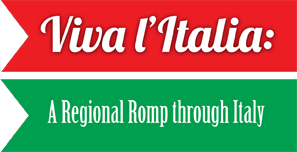Italy – what dreams and romantic longings the name conjures up. Florence, Venice, Rome – landmarks of European history and civilization. The country of Caesar, Cicero, Horace, and Virgil: the land which gave birth to Michelangelo, Raphael, Titian, Dante, Ariosto, and Tasso. The list would be endless if it also encompassed ‘modern' day celebrities such as Giuseppe Verdi, Enrico Fermi, Sofia Loren, Giorgio Armani, Dino Zoff (considered the best goalkeeper in the history of football), and the controversial Silvio Berlusconi. Renowned for its architecture, its complex historical past, its literature, fashion, and cuisine, Italy is now sub-divided into 20 regions, where most speak Italian (a Florentine variety of Tuscan).
Viva l'Italia. A Regional Romp through Italy is an exhibition constructed around images of Italian cities from a 17th century copy of Pietro Bertelli'sTheatro delle Citta d'Italia (1629). By utilising these images, the viewer ‘romps' through the various regions of the country cabinet by cabinet, from Piedmont in the north, to Puglia in the southeast, Sardinia in the west, and Sicily in the southwest. The Republic (formed in 1946) encompasses some 301,338 kilometres.
Although by necessity selective, the exhibition displays some wonderful books, primarily from the collections of Esmond de Beer and Charles Brasch, who both thoroughly enjoyed what Italy offered to the world. Notable items include: William Thomas' The Historie of Italie (1549);Pietro Bertelli's Theatro delle Citta d'Italia (1629);Thomas Martyn's The Gentleman's Guide in his Tour through Italy (1787);
Alexandre de Rogissart's Les Delices de l'Italie (1706);Henry Kipping's Antiquitatum Romanarum, Libri Quatuor (1713);and Jean-Jacques Boissard's Pars Romanae Urbis Topographiae &Antiquitatum (1597). Modern publications such as D. H. Lawrence's Sea and Sardinia (1921) and Samuel Butler's Alps and Sanctuaries of Piedmont and the Canton Ticino (1923) also feature. Interspersed are Italian recipes, carnival characters, and works by Giovanni Battista Piranesi (not scanned for the on-line exhibition).
Poster ![]() (229K PDF)
(229K PDF)
Handlist ![]() (1.1MB PDF)
(1.1MB PDF)

